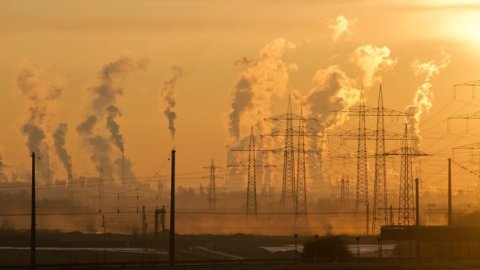Myth No. 1 – Gas is a fuel that cannot be relied on due to the crisis in Ukraine
The dispute between Russia and Ukraine over gas supplies and prices led to a complete cut off of supplies to Ukraine in 2015 and a Russian threat to cut off supplies to other European countries via Ukraine in 2018.
Given that Russia is a major gas supplier to the European Union, these decisions have obviously fueled doubts about the future of gas as a reliable energy resource. In fact, as Bloomberg reported earlier this year, Ukraine has managed to get by without gas supplies from Russia and the EU is increasing the share of gas from countries as diverse as Norway and Algeria.
In addition, several EU countries have significant gas reserves, including the Netherlands, the United Kingdom, Germany, Cyprus and Denmark. So even without Russian supplies, the continent has plenty of options at its disposal to continue relying on gas into the future while transitioning to renewable energy is underway.
Myth No. 2 – Gas is too expensive
The most recent statistics released by the EU, from the analysis of electricity and gas supply prices for domestic and industrial use already between 2010-2012 showed that gas was the cheapest option per kilowatt hour (kwh). For households, the average cost was $0,23/kWh for electricity compared to $0,08/kwh for gas. For companies the results are similar; for industries the average electricity price was $0,13/kwh and $0.04/kwh for gas. It's not just the cost to the end user that needs to be considered — the entire lifecycle cost from extraction to consumption needs to be considered.
This is a very difficult number to calculate due to the variability of the technologies used to extract and process the energy sources. The age of power plants is another factor to consider, as is the distance the energy needs to be transported. For this reason, in the 2014 report “Energy subsidies and costs in the EU” the analysts calculated the normalized cost of the production of electricity (LCOE) and heat (LCOH); gas was found to be the sixth most convenient option, among the 15 energy sources assessed, both renewable and fossil.
Myth No. 3 – Gas is “just another fossil fuel” and they are all equally bad
Of all the fossil fuels burned for electricity, heating, agriculture, industry and transport, according to statistics released by the EU's Energy Information Administration (EIA), natural gas is the one with the lowest carbon dioxide (CO2) emissions.
As the development of the renewable energy sector continues, this data demonstrates that natural gas should be the fossil fuel of choice to meet the growing demand for energy.
Myth No. 4 – Gas is a “fuel of the past”
The trend that sees the use of renewable and greener sources in the production of electricity and heat and as fuel for vehicles is undoubtedly accelerating, but the truth is that the world is far from completely abandoning fossil fuels. Considering that natural gas represents the most convenient option, in terms of both monetary and environmental costs, it is certainly not possible to think of abandoning it.
Furthermore, the world reserves of natural gas are still at significant levels (just think of the recent discovery of Zohr in the eastern Mediterranean basin) and that the innovations generated by clean technologies help to reduce the impact deriving from its combustion, it is probable that the gas will continue to play an important role in the future energy mix.
Myth No. 5 – Electricity is a better partner than gas to steer the energy mix towards a low-carbon future
There's no myth easier to debunk than this, as it all depends on where the energy used to create electricity comes from. Indeed, if it comes from a coal plant, the answer is obvious. Therefore there is no single answer to the question. But a report by the World Energy Council "Deciding the future: energy policy scenarios up to 2050" explains that by 2050 world supplies will have to double to meet demands, as emerging economies continue to develop and the world population is in decline. constant growth.
The same report states that starting from 2020 natural gas will represent an increasingly useful tool for reducing greenhouse gas emissions from the production of electricity. Considering the future global energy mix in a low-carbon economy, gas has a natural role as a bridge, especially if used in increasingly cleaner and more efficient ways that limit emissions even more than hitherto achieved.
For this reason, despite the global aversion to fossil fuels which also involves gas, with the right technological innovations to reduce the environmental impact, this energy source will play a very important role in feeding the world as the development of new technologies continues. green sources.
From the Eniday site.





